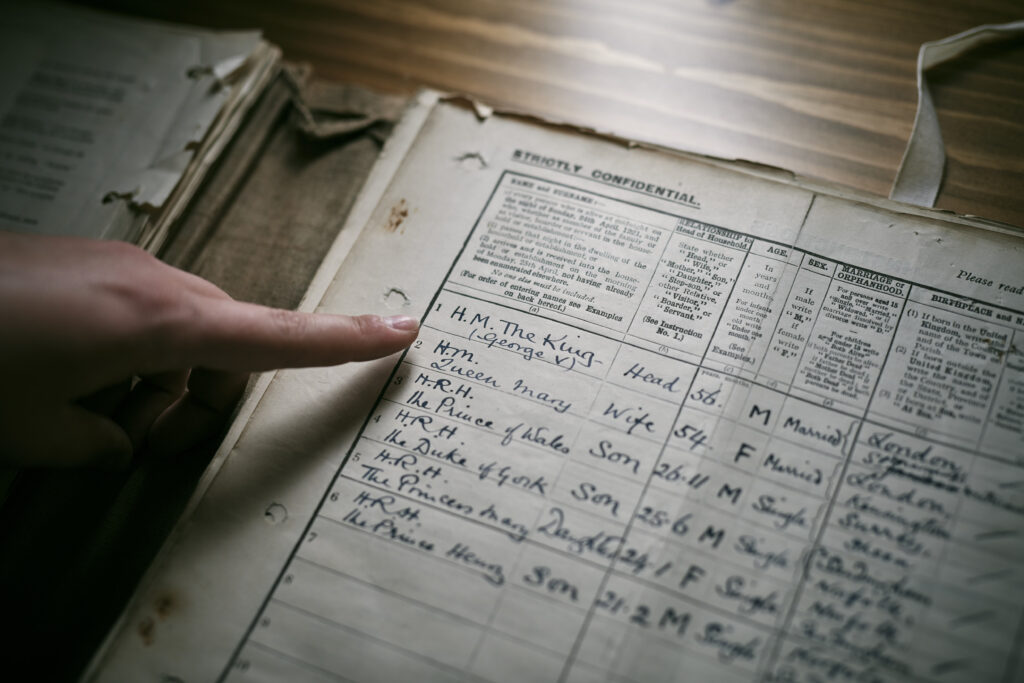
Findmypast and The National Archives unveil 1921 Census of England and Wales
Findmypast and The National Archives have published the highly anticipated 1921 Census of England and Wales online today, as the 100-year rule, which ensures records are closed to the public for 100 years, has ended.
After three years of intensive conservation and digitisation and with the help and support of the Office for National Statistics, the Census is now available to search and explore online, at Findmypast.co.uk.
Taken on June 19th 1921, the Census saw over 38,000 enumerators dispatched to every corner of England of Wales to capture the details of more than 38 million people. This included over 8.5 million households as well as all manner of public and private institutions ranging from prisons and military bases to public schools and workhouses.
Offering more detail than any previous census, the 1921 Census of England and Wales not only asked individuals about their age, birth place, occupation and residence, but also their place of work, employer details, and gave ‘divorced’ as an option for marital status for the first time.
Falling between the two world wars, the record paints a disparate picture of England and Wales, from the Royal household to the average working-class citizen, still reeling from the impact of WW1, a major housing crisis, the Spanish flu pandemic, ravaged economy and industrial turmoil.
The publication of these documents mark the last significant census release for England and Wales in many people’s lifetime as the 1931 Census was destroyed in a fire and the 1941 Census was never captured due to the Second World War. This means the next census will not be available until 2052.
The 1921 Census demonstrates the rapid social and cultural change the country was undergoing, with the changing role of women and the impact of WW1 proving particularly apparent.
Owing to the vast number of men who fell in the war, the Census reveals there were 1,096 women for every 1,000 men recorded, with this discrepancy being the biggest for those aged between 20 and 45. This means there were over 1.7 million more women than men in England and Wales, the largest difference ever seen in a census.
There was also a dramatic increase in the number of people recorded in hospitals with a 35% increase from 1911, three quarters of whom were men, many presumably suffering from wounds received in the war.
As a result of the number of men killed or left permanently disabled, the 1921 Census also saw many more women stepping into employment, with an increase in the number of women working as engineers, vets, barristers, architects and solicitors.
From the famous to the infamous, the documents also provide a vivid snapshot of the lives of prominent individuals alive at that time, including cultural icons such as Lord of the Rings writer – J.R.R. Tolkien, Famous Five author – Enid Blyton, Peter Rabbit writer – Beatrix Potter, Winnie the Pooh author – A.A. Milne and the creator of Sherlock Holmes, Arthur Conan Doyle.
In Scotland, National Records of Scotland takes responsibility for historical census data. NRS will be releasing their indexed images of 1921 Census returns for Scotland in the latter half of 2022. Ireland and Northern Ireland also conducted their own censuses separate from England and Wales. However, The 1921 Census was not taken in Ireland due to the Irish War of Independence. Censuses in Ireland and Northern Ireland were conducted in 1926.
Tamsin Todd, CEO of Findmypast said: “Taken between two world wars, following a global flu pandemic, during a period of economic turmoil and migration, with social change at home as women won the right to vote, the 1921 Census documents a moment in time that will resonate with people living today.
“It has been a great honour for Findmypast to work with The National Archives as its selected partner to digitise and transcribe the 1921 Census. I am incredibly proud of our Findmypast team who have worked with passion and dedication to conserve, scan, and transcribe 38 million historical records. Our advanced search technology enables family historians to easily find and view images of the 1921 Census, and connect individual records into their family trees. Family historians around the world can now meaningfully search the Census to reveal where and how their ancestors lived and worked 100 years ago.”
Part of the DC Thomson group, Findmypast is a fast-growing, technology-driven subscription service. With a bank of billions of digitised records, and access to some of the world’s most renowned historical databases, Findmypast allows customers to connect to people, both past and present, and visualise their family story in more detail than ever before.
